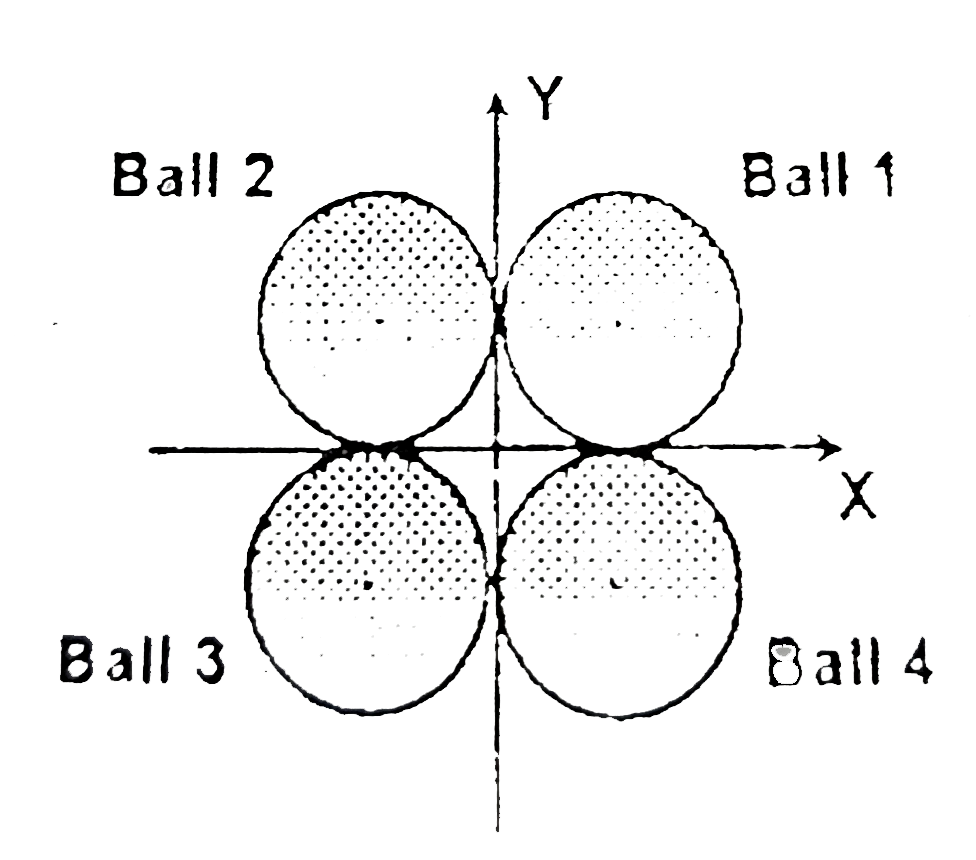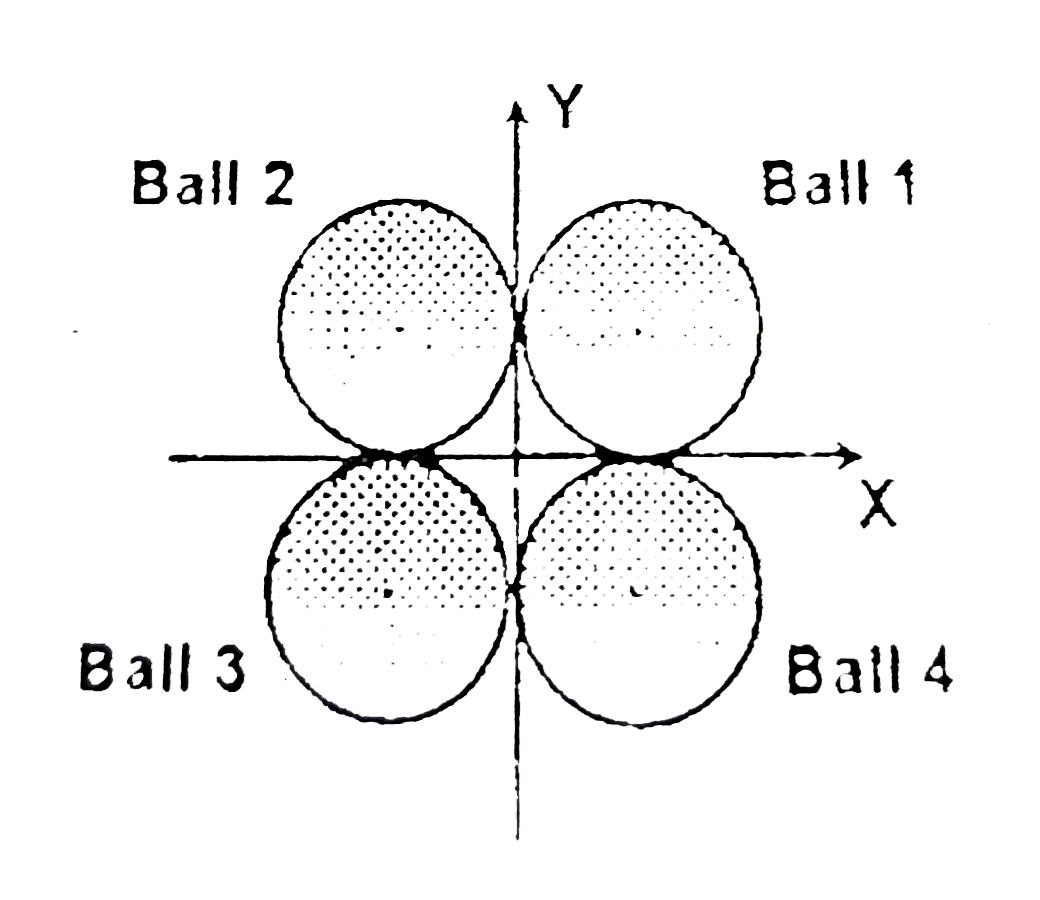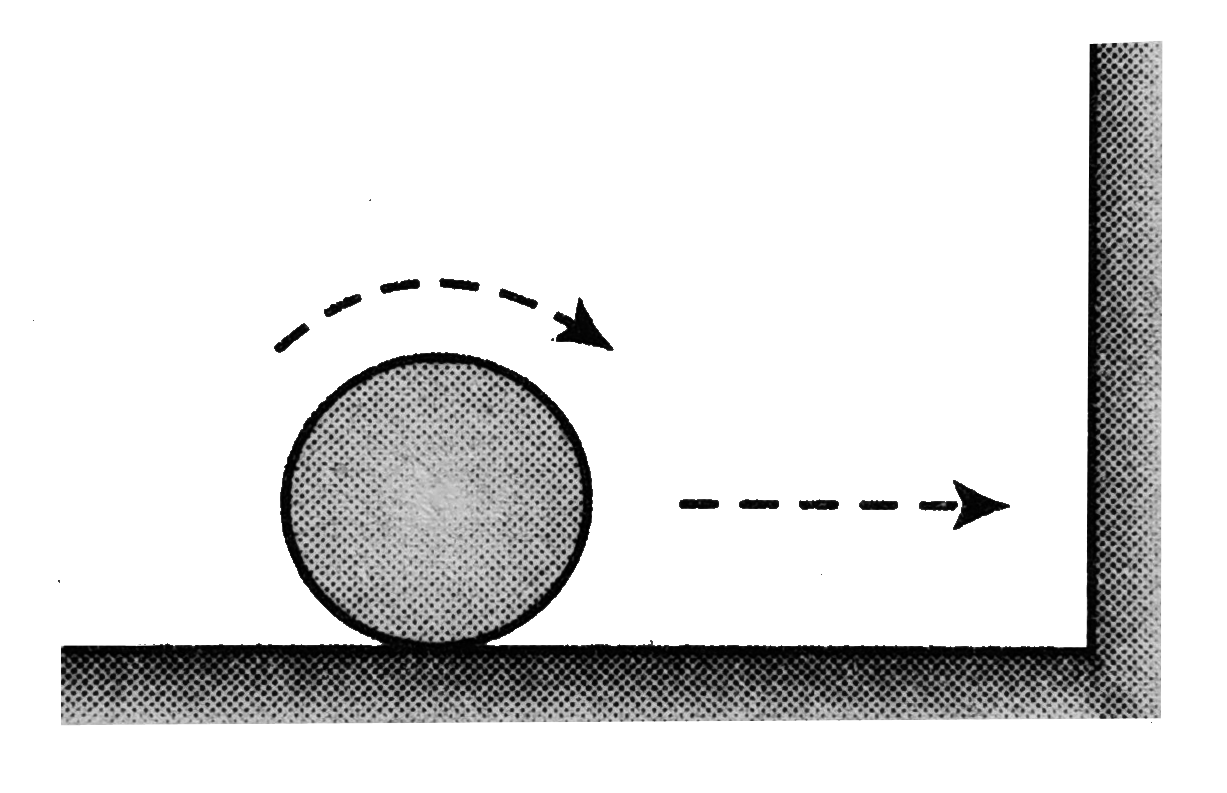4 identical balls of radius R and mass m are lying a gravity free space. The balls are in contact and there centres are forming vertices of a square of side 2R in horizontal plane. One identical ball travelling vertically with a speed v hits the four balls symmetrically. The collision is perfectly elastic. The centre of the 4 stationery ball are at (R, R, 0), (R, −R, 0) and (−R, −R,0) initially.
Mark the incorrect statement

Momentum of system will remain conserved.
Kinetic energy of system will remain conserved at all instant.
Mechanical energy will remain conserved
Angular momentum of system about centre of mass will remains conserved.
Step by step video & image solution for 4 identical balls of radius R and mass m are lying a gravity free space. The balls are in contact and there centres are forming vertices of a square of side 2R in horizontal plane. One identical ball travelling vertically with a speed v hits the four balls symmetrically. The collision is perfectly elastic. The centre of the 4 stationery ball are at (R, R, 0), (R, -R, 0) and (-R, -R,0) initially. Mark the incorrect statement by Physics experts to help you in doubts & scoring excellent marks in Class 12 exams.
Similar Questions
4 identical balls of radius R and mass m are lying a gravity free space. The balls are in contact and there centres are forming vertices of a square of side 2R in horizontal plane. One identical ball travelling vertically with a speed v hits the four balls symmetrically. The collision is perfectly elastic. The centre of the 4 stationery ball are at (R, R, 0), (R, −R, 0) and (−R, −R,0) initially.
The speed of ball which was intitially travelling with speed v just after collision is
 View Solution
View Solution4 identical balls of radius R and mass m are lying a gravity free space. The balls are in contact and there centres are forming vertices of a square of side 2R in horizontal plane. One identical ball travelling vertically with a speed v hits the four balls symmetrically. The collision is perfectly elastic. The centre of the 4 stationery ball are at (R, R, 0), (R, −R, 0) and (−R, −R,0) initially.
The speed of ball 1 after collision is :
 View Solution
View Solution
Knowledge Check
- Question 1 - Select One
Spherical balls of radius R are falling in a viscous fluid of velocity v .The retarding viscous force acting on the spherical ball is
Adirectly proportional to R but inversely proportional v.Bdirectly proportional to both radius R and velocity v.Cinversely proportional to both radius R and velocity v.Dinversely proportional to R but directly proportional to velocity v.
Two balls, each of radius R, equal mass and density are placed in contact, then the force of gravitation between them is proportional to
View SolutionTwo balls, each of radius R, equal mass and density are placed in contact, then the force of gravitation between them is proportional to
View SolutionTwo balls of radius r each are placed at a distance R and released . The speed of each ball when they collide
 View Solution
View SolutionA ball of mass m moving at a speed v makes a head-on collision with an identical ball at rest. The kinetic energy of the balls after the collision is three fourths of the original. Find the coefficient of restitution.
View SolutionA ball, rolling purely on a horizontal floor with centre's speed v, hits a smooth vertical wall surface elastically. Answer the following questions.

Just after the collision is over, the velocity of the lowest point of the ball isView SolutionThere are four solid balls with their centres at the four corners of a square of side a. the mass of each sphere is m and radius is r. Find the moment of inertia of the system about one of the sides of the square
View SolutionThe ball A collides elastically with an identical ball B with a speed v. The ball B touches another identical ball C. The velocity of C, after the impact, is equal to
 View Solution
View Solution
